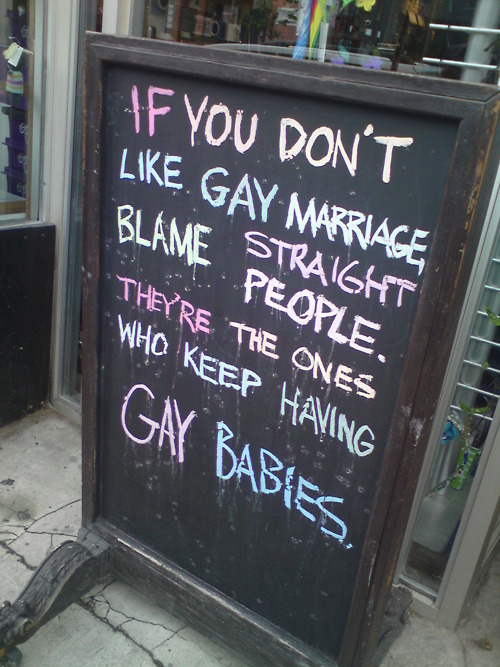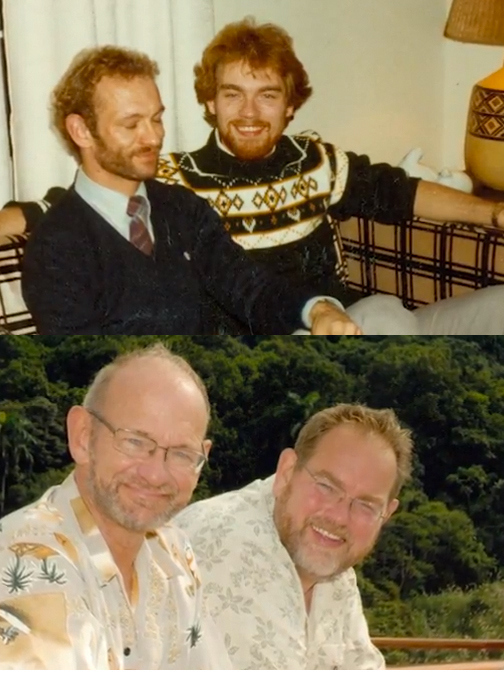I won’t copy/paste the contents of the 14 steps, just pick out a few and comment on them.
Step 1: Blame yourself.

This makes me smile. It’s a knee-jerk reaction, the kind I got when I first heard “What came first, the egg or the chicken?” My mind directly went to “What came first, the gay kid or his straight parents?” Well, of course . . . and then again, who knows how many gay or bi people produced children in heterosexual relationships? Not to deviate from the first point, which, in a subtly defensive tone is trying to make us aware of our relationship to each other.
We would not be discussing gay marriage if, in fact, people weren’t gay, and since most gays come from straight parents, we’re obviously talking about connection — not blame.
But the 14 steps are not meant to take the moral high ground, so we take them for what they are: funny and provocative. Under the surface, we collect some interesting messages.
Step 8: Take a look at the people in your own life. How many people do you know who have stayed together as long as these couples?
Here’s one of the examples provided: “Lee & Bert have been together for over 25 years. They live in
Illinois. Recently, Bert had a heart attack and Lee and wasn’t allowed
in the emergency room because they weren’t married. Lee had to tell the
nurse his marital status was single even though he had been with his
partner for 25 years.”
While I agree that queer couples can be compared legitimately to heterosexual couples, I don’t think we need to pretend to have fuller or longer relationships to be awarded respect and the same rights and freedoms. (And anyway, no two relationships are the same.) A relationship’s quality is not based on its length, although it is (hopefully) an indicator of the couple’s commitment to each other. Point 8 might have been stronger if it were phrased like this: take a look at these couples and give me one reason why their relationship and rights should not be valid and valued.

What’s your favourite “step”?
 Why you can trust Xtra
Why you can trust Xtra


